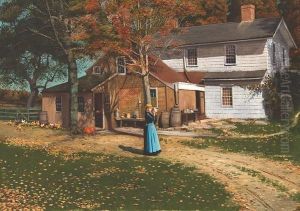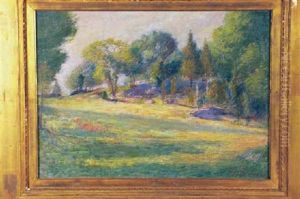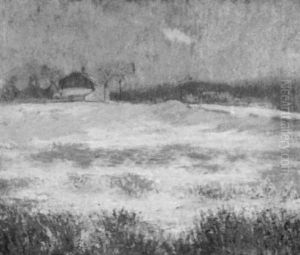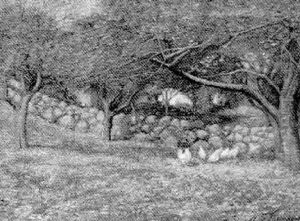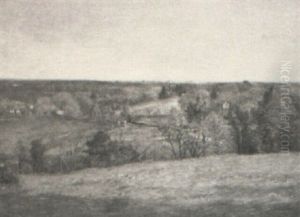Henry Grinnell Thomson Paintings
Henry Grinnell Thomson, not widely known in the pantheon of celebrated artists, was an American painter born in 1873. His life and work were primarily situated in the context of the late 19th and early 20th centuries, a period that saw significant transformations in the world of art, with movements such as Impressionism, Post-Impressionism, and Modernism emerging and evolving.
Thomson's artistic journey is less documented than that of his more famous contemporaries. However, it is known that he pursued art in an epoch where the traditional aesthetics were being challenged, and new forms of artistic expression were being embraced. His work, although not groundbreaking, contributed to the rich tapestry of American art of that era.
Thomson's oeuvre consisted mainly of landscapes, still lifes, and portraits. His style may have been influenced by the prevailing artistic trends of his time, but there are no records of him being directly involved with any major art movements or collectives. His approach to painting was characterized by a delicate touch and a restrained palette, often focusing on the serene and the beautiful.
Despite his lack of fame, Thomson's work did attract some attention during his lifetime, and he may have exhibited his pieces at local art shows or galleries. Like many artists of his day, he might have also taken on commissioned work to support himself financially.
Henry Grinnell Thomson passed away in 1940. While he did not achieve significant fame or recognition, his paintings may still be appreciated by those who encounter them, serving as quiet reminders of the individual talents and diverse perspectives that contribute to the history of American art. As with many artists of moderate renown, his works might reside in private collections or regional museums, appreciated by a select group of art aficionados.
